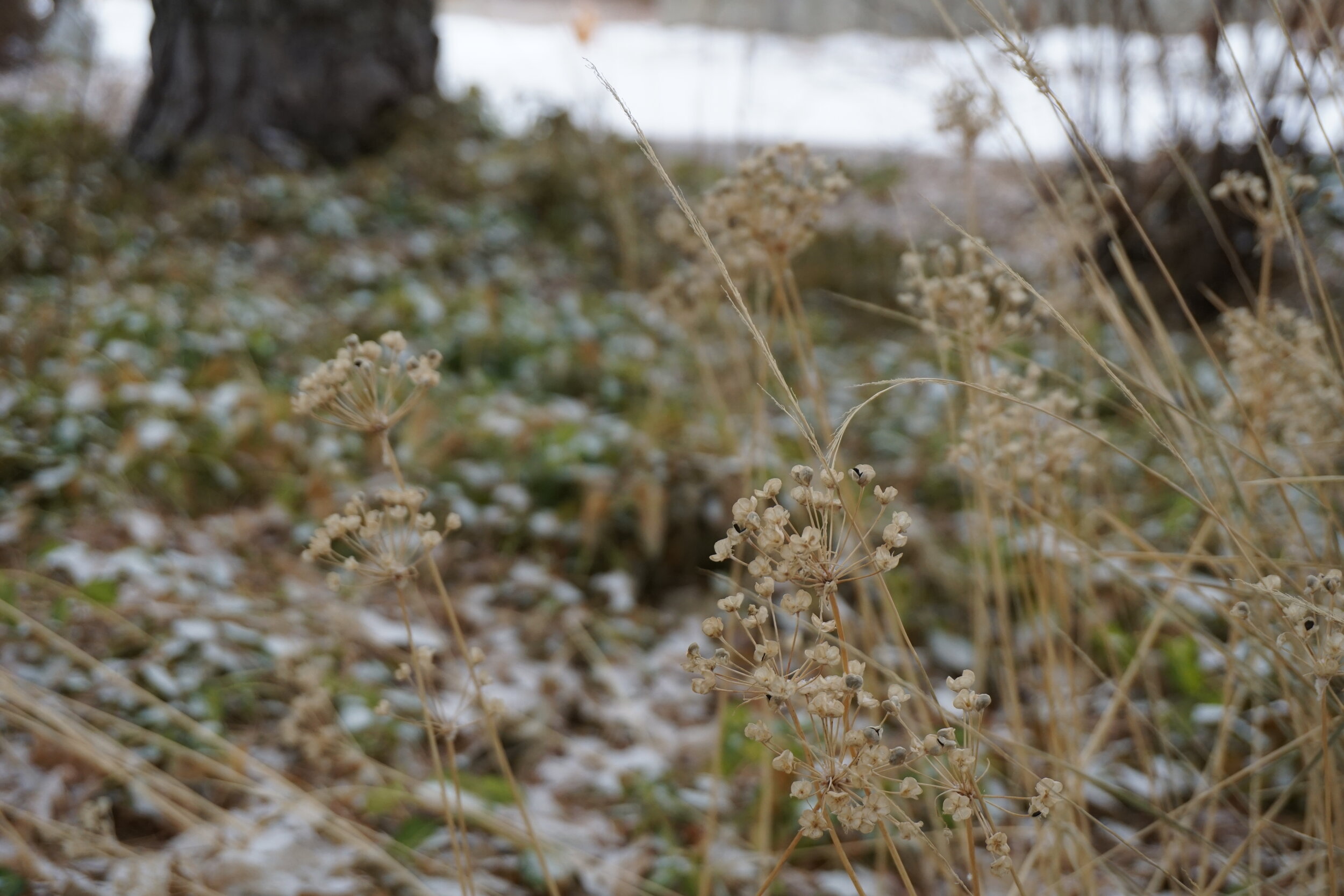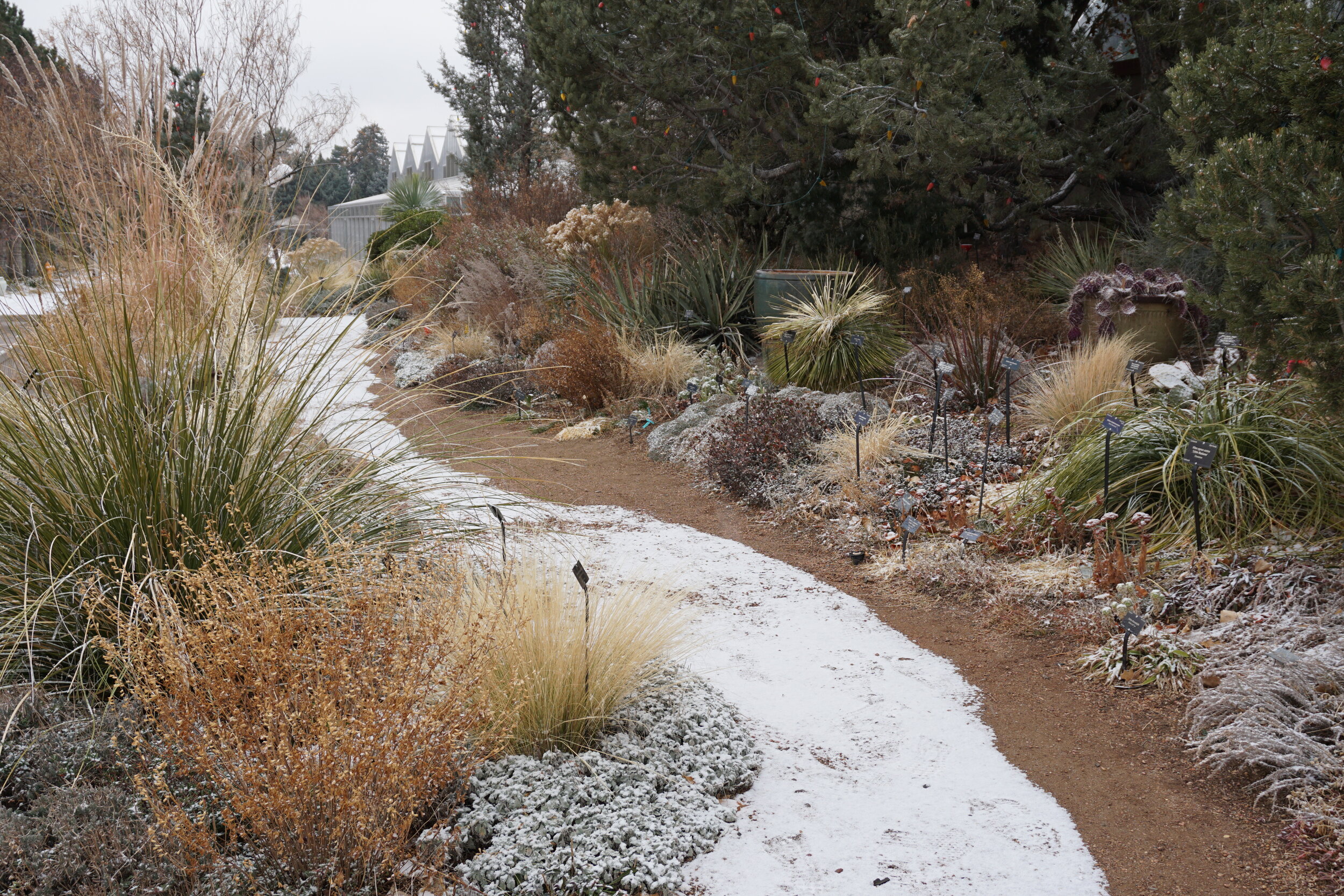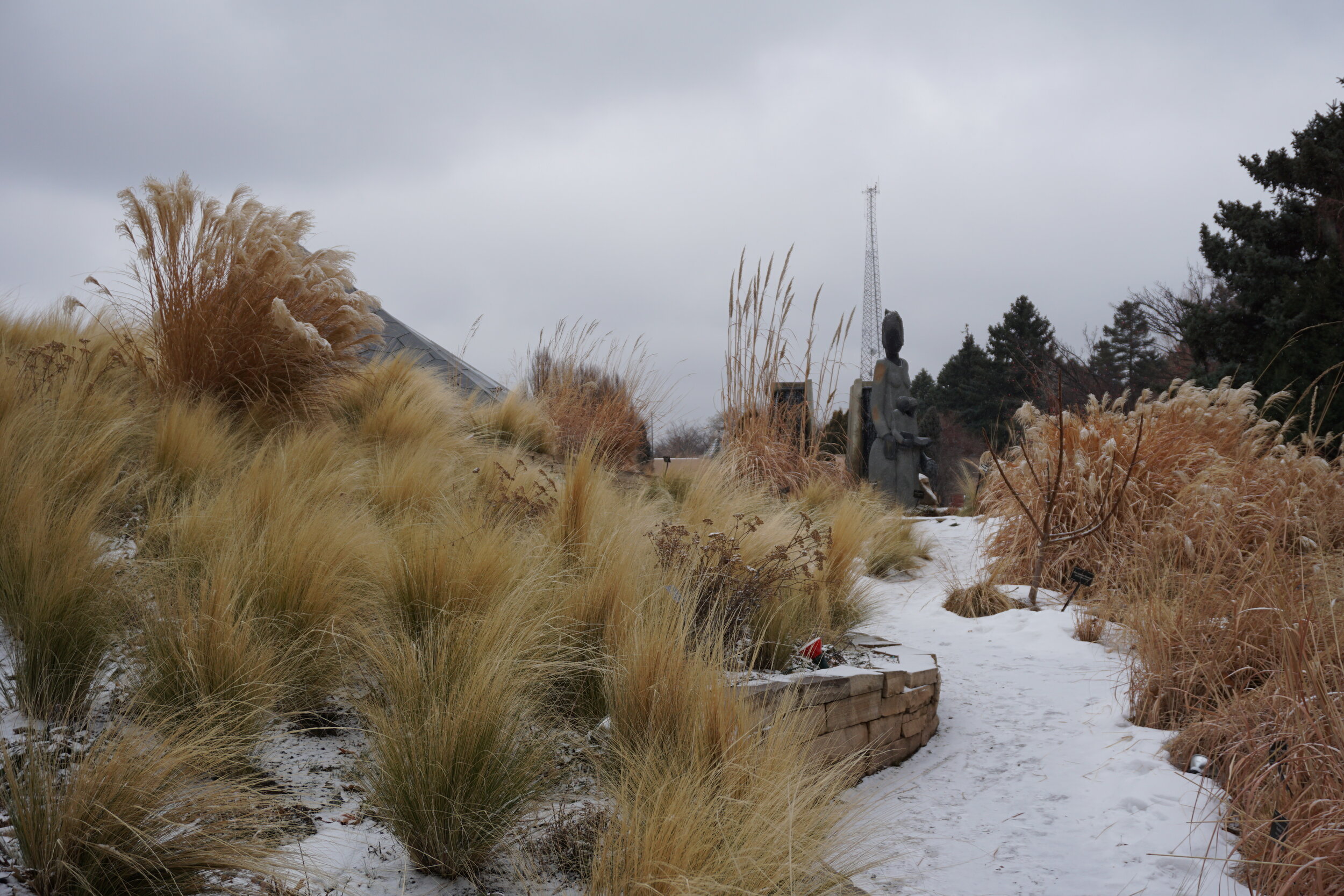By Emily Maeda
December 29, 2020
After years of landscaping, gardening, and growing plants in Colorado, I have finally come to appreciate the beauty of the winter garden. In fact, I now long for its unique colors, textures, and forms. While the spring, summer, and fall are each bursting with their own colors and drama, the winter garden reveals itself in subtleties that take time to appreciate much like a fine wine or aged cheese. Time collects in the winter garden; all the growing is preserved in the forms, colors, and textures of the plants. Colorado, with its intense blue skies and sun-drenched days even in the middle of winter, is an especially good place to appreciate the forms of winter.
Color in winter? Can it be? After years of interacting with clients, I know the conception in most peoples’ minds is that green is the only desirable color in winter. We buy evergreens as Christmas trees after all, not the bare forms of deciduous branches. But brown is a color too! How often we forget the amazing spectrum of colors outside of green. Look more deeply into your spaces and you will see the burnt red of Schizachyrium (little bluestem), the black of Baptisia (false indigo), and the yellow of Bouteloua (grama grass).
Looking a little longer, you will start to notice the black balls of rudbeckia (black-eyed susan) and echinacea, the red twigs of cornus (dogwood) and the deep red of dead sedum blooms. The colors range from deep reds, blues, blacks, yellows and oranges - so many beyond the green we tend to see. Thinking about the color and persistence of your plants into winter is essential in creating a satisfying garden. If we are to create an aesthetic that is in harmony with Colorado’s climate, learning to appreciate and plan for its beauty in winter is a huge part of embracing where we live.
Many people stop with color when they think of the aesthetic appeal of the garden. But seasoned gardeners know that form and texture are just as important and in many ways more important than color. While color grabs our eyes, form and texture are what set gardens apart. Because color comes and goes throughout the seasons, it is important to think about form and texture.
What do I see in the winter garden? I see the grasses even more than in the fall. Their seed heads and blades sway in the wind and catch the ephemeral and dwindling light of winter. Their softness contrasts with the ‘bones’ of shrubs, their denuded branches that now stand out starkly in the winter light. Their softness also contrasts with the balls and umbrels of perennials. Without the riot of color present in the other seasons, we are able to appreciate the skill of the designer. Here is where mistakes are revealed and why many designers rely on evergreens to hide their lack of knowledge. When thinking through a plant design, the form and texture must take priority in the planning because we know winter is coming! A design that allows the forms to take center stage is a design where the viewer always has more to enjoy.
I hope this inspires you to spend longer looking into your garden and thinking about ways to bring more color, texture, and forms that reveal the beauty of the winter garden. At Tree of Life, we want our clients to be surrounded with the beauty of nature in every season. It is easy to find plants that wow during their active growth but it takes extra thought and intention to plan for a garden throughout every season. We hope this brings you inspiration.









